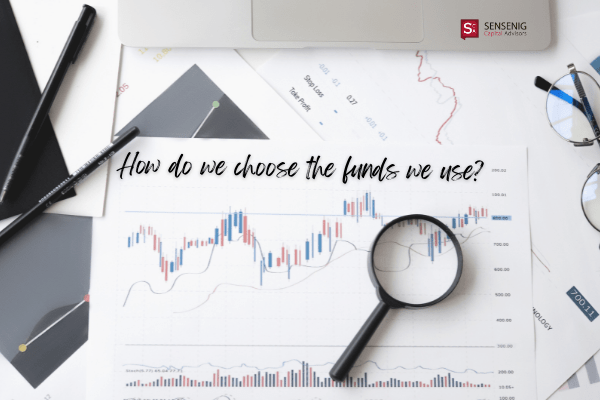As the capital markets have improved, many investors have shifted their concern toward inflation. Folks are asking how they can prepare their portfolios. This article explores two basic ways to address inflation uncertainty and highlights asset groups that may prove useful.
As you consider strategies, keep in mind that there is a marked difference between expected and unexpected inflation, which is explained in greater detail below.
Hedging vs. Total Return Strategies
Investors can prepare for unexpected inflation by following one of two basic strategies—hedging the immediate effects of inflation or earning a total return that outpaces inflation over time.
Hedging involves choosing assets whose value tends to rise with inflation. Although holding these assets may reduce the total return of a portfolio, the positive correlation with inflation can help an investor keep up with rising consumer prices, at least over the short term. (Correlation refers to the co-movement of asset returns. When two assets are positively correlated, their returns tend to move together; when negatively correlated, their returns are dissimilar.)
In a total return strategy, an investor attempts to outpace inflation by holding assets that are expected to earn higher real (inflation-adjusted) returns. This investor is willing to give up short-term inflation protection for an opportunity to grow real wealth.
To insulate a portfolio from unexpected inflation risk, both strategies may employ some combination of stocks, short-term fixed income, and Treasury Inflation-Protected Securities (TIPS). Let’s consider each of these:
Stocks
Equity securities have provided positive inflation-adjusted returns over the long term. From 1926-2008, the total US stock market, as measured by the CRSP 1-10 Index, outpaced inflation by an average of 6.16% per year.1 To achieve this higher expected real return in stocks, however, an investor had to accept more risk, as measured by greater volatility in returns, and endure periods when stocks did not outpace inflation. As a result, stocks may be less effective for hedging short-term inflation and more suitable for investors who want to beat long-term inflation by earning a higher total return.
As capital markets have improved, investors have shifted their concern toward inflation. Folks are asking how they can prepare their portfolios.
Some investors assume that high inflation leads to lower stock market performance, while low inflation fuels higher stock returns. In reality, inflation is just one of many factors driving stock performance. US market history since 1926 shows that nominal annual stock returns are unrelated to inflation.
Fixed Income (Bonds)
Higher inflation can hurt bondholders in two ways—through falling bond market values triggered by rising interest rates, and through erosion in the real value of interest payments and principal at maturity. This inflation exposure tends to impact the prices of long-term bonds more than those of short-term bonds, and investors can mitigate the effects of rising interest rates by holding shorter-term instruments.
Many types of investors may benefit from holding short-term bonds. When interest rates are climbing, a portfolio with shorter-term maturities enables an investor to more frequently roll over principal at a higher interest rate. This can help inflation-sensitive investors keep up with short-term inflation and enable total return investors to reduce portfolio volatility, which can lead to higher compounded returns and growth of real wealth.
Treasury Inflation-Protected Securities
Treasury Inflation Protected Securities (TIPS) are fixed income securities whose principal adjusts to reflect changes in the Consumer Price Index (CPI). When the CPI rises, the principal increases, resulting in higher interest payments. At maturity, an investor receives the greater of the inflation-adjusted or original principal. The inflation provision enables TIPS to preserve real purchasing power and hedge against unexpected inflation.
TIPS are generally a good short-term inflation hedge since principal is adjusted for changes in the CPI. They are also a good portfolio diversifier for long-term investors due to negative correlation with equities and relatively low correlation with most types of fixed income.
However, keep in mind that TIPS prices also have been affected by changes in real interest rates, so TIPS may not track inflation one-to-one in the short term or over longer periods of time. In fact, TIPS can lose market value if real interest rates increase.
Commodities
Commodity futures, as well as gold and oil, are perceived as effective inflation hedges because their returns are positively correlated with inflation. But commodities are more volatile than stocks, and their returns do not always rise with inflation because of this significant volatility. So adding these assets to a portfolio may increase real return volatility, which could offset the benefits of hedging.
Investors should also consider the economic argument against holding commodities. Unlike stocks, commodity futures do not generate earnings or create business value. They are essentially a speculative bet in which there is a winner and loser at the end of each trade. Moreover, a broad-based stock portfolio already has significant commodity exposure through ownership of companies involved in energy, mining, agriculture, natural resources, and refined products.
As you assess your exposure to a high-inflation scenario and form a strategy that reflects your financial goals and risk tolerance, consider that:
- Expected inflation is built into asset prices. In our view, markets efficiently integrate all known information into prices. Thus, current prices already reflect expectations of future inflation. Only unexpected news will affect the inflation outlook.
- Hedging unexpected inflation has a cost. Investments traditionally regarded as effective short-term inflation hedges have lower historical returns than stocks—and some have much higher volatility.
- Volatility matters. Evaluating assets solely on their ability to track inflation disregards the effect of volatility on returns and risk. Some assets that are positively correlated with inflation have large return variances, and adding these to a stock and bond portfolio may increase overall volatility.
Even with the prospect for higher inflation, investors who take a total return approach may be better served than those who choose assets based on correlation with the CPI. By choosing assets with higher expected long-term returns and maintaining broad diversification, investors can seek to grow real wealth and preserve the purchasing power of their dollars.
1. Real return calculation: (1+CRSP 1-10 Index return)/(1 + US CPI)-1. The CRSP 1-10 Index is a market capitalization weighted index of all stocks listed on the NYSE, Amex, NASDAQ, and NYSE Arca stock exchanges. CRSP data provided by the Center for Research in Security Prices, University of Chicago.



